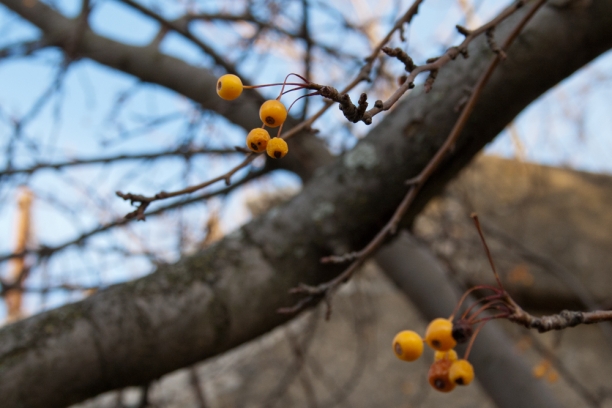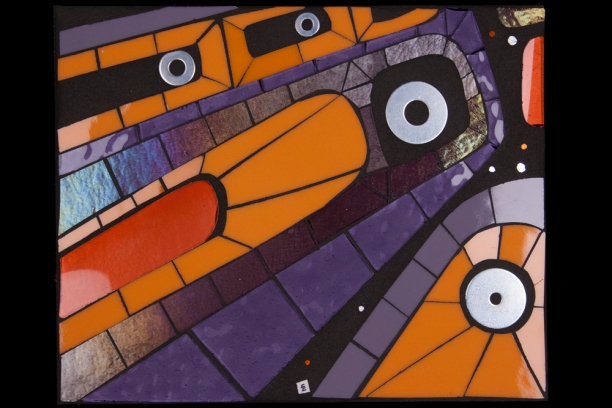I've been collecting images of ice: lines, crystals, icicles. I am studying the elegance and variation of ice lines and using these fluid, coherent solutions as the basis for new drawings. Ice offers a mineral world parallel to glass: a material that flows when heated but rigid and breakable when cold. The ice images are also informing my understanding of the aesthetics of winter. I see myself as an expert on winter. I grew up on the Canadian prairies where winter is long and cold and unrelenting. In Alberta, blue skies and sunshine add color and sparkle to the winter world. Chicago is typically a much grayer winter; dark and drab with on-and-off snows. Forms are reduced to stark lines and palettes pared back to grayscale with occasional pops of sienna and burnt orange. It forces us to look more carefully to find beauty and interest in the outdoor world.
Trace is inspired by the tessellation of ice around fall leaves. Still beautiful, these organic forms are outlined and highlighted by the mineral world to create a striking composition.
Trace 2.1 | 10" x 10" | glass, 24k gold smalti, grout on cradled art board




























